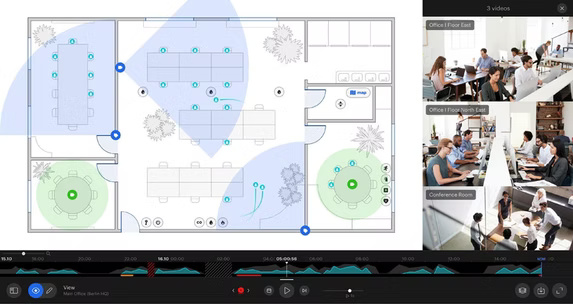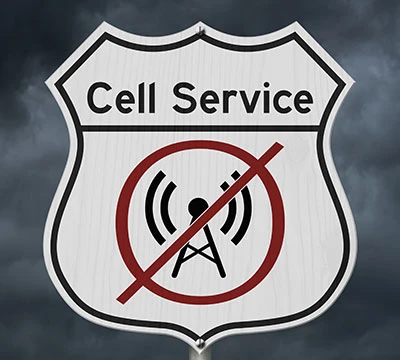AT&T Outage Affecting Major Markets: What You Should Know!
The recent AT&T outage has left a significant mark on businesses and individuals alike, spotlighting the precarious nature of our reliance on cellular networks. Reports first started at 4 a.m. ET February 22, 2024, over 32,000 AT&T customers found themselves cut off from the world, unable to make calls, send texts, or access the internet.
The disruption rapidly escalated, affecting over 71,000 users by 8 a.m. ET and spilling over into other major carriers like Verizon and T-Mobile. Major cities such as Chicago, Dallas, Los Angeles, and Atlanta were hit hardest, prompting city officials to issue guidelines on contacting emergency services during the outage, emphasizing the importance of not trying to test the 911 emergency line.
The disruption in cellular services has far-reaching implications for businesses, hindering their ability to conduct day-to-day operations, communicate with clients, and maintain productivity levels. From small businesses relying on mobile devices for point-of-sale transactions to large enterprises managing remote teams, the outage highlighted the critical role of reliable communication infrastructure in supporting modern business activities.
As the outages persisted, unprepared businesses scrambled to find alternative communication solutions, such as landline phones or Wi-Fi-based messaging apps, to mitigate the impact on their operations. However, the inconvenience and potential loss of revenue caused by the outage underscores the vulnerability of businesses to unforeseen disruptions in communication networks.

5 Ways of Preventing Disruption with Unified Communication Solutions
1. Diversification of Communication Channels:
Think of unified communication solutions as an insurance policy for your business communication. By not putting all your eggs in one carrier’s basket, you ensure that a single outage doesn’t leave you in the dark. These platforms blend various tools—voice, video, instant messaging, and email—into one seamless ecosystem, enabling you to keep the conversation going no matter what. To mitigate the impact of such outages, businesses of any size can turn to unified communication solutions for resilience and continuity.
2. Integration of VoIP and Mobile Solutions:
Voice over Internet Protocol (VoIP) and mobile communication solutions play a crucial role in enabling remote work and mobility for businesses. Unified communication platforms often integrate VoIP functionality, allowing businesses to make and receive calls over the internet rather than traditional phone lines.
Voice over Internet Protocol (VoIP) and mobile communication solutions play a crucial role in enabling remote work and mobility for businesses. Unified communication platforms often integrate VoIP functionality, allowing businesses to make and receive calls over the internet rather than traditional phone lines.
3. Leverage the Cloud for Accessibility and Scalability:
Cloud-based unified communication platforms are a game-changer, offering access from anywhere and scalability to match your business’s evolving needs. This means your team can stay connected, and your business can continue operating smoothly, regardless of local outages.
4. Prioritize Security and Stay Compliant:
Security is a top priority for businesses when adopting communication solutions, especially considering increasing cyber threats and data privacy regulations. Unified communication platforms often incorporate robust security features such as encryption, multi-factor authentication, and secure data transmission protocols to protect sensitive information.
Additionally, many solutions offer compliance features to help businesses adhere to industry-specific regulations and standards.
5. Streamline Collaboration with AI Automation & Centralized Tools:
Unified communication solutions streamline communication and collaboration by providing centralized management and collaboration tools. Through a single platform, businesses can manage user accounts, configure settings, and track usage across various communication channels.
Collaboration features such as document sharing, screen sharing, and virtual meeting rooms facilitate teamwork and decision-making, enhancing productivity and efficiency.
The AT&T outage is a stark reminder of our dependence on digital communication and the need for contingency plans. Unified communication solutions not only provide a safety net in times of crisis but also enhance day-to-day operations, offering a smarter, more resilient way to work.
In embracing these strategies, businesses can turn the tide, transforming potential vulnerabilities into strengths that withstand the test of time and technology.
8 Ways Businesses can better prepare for and mitigate the impact of telecommunications outages, like the one experienced by AT&T.
1. Network Redundancy:
Ensuring that your business has access to multiple network providers or redundant connections can mitigate the impact of outages with a single provider. This could involve having contracts with multiple cellular carriers, utilizing both wired and wireless connections, or employing technologies like SD-WAN to automatically switch between connections.
2. Continuous Monitoring and Maintenance:
Proactively monitoring network infrastructure for potential issues and performing regular maintenance helps identify and mitigate risks before they lead to outages. This includes monitoring for signs of hardware degradation, software vulnerabilities, or capacity limitations.
3. Data Redundancy:
Implementing redundant storage solutions, such as RAID arrays or cloud backups, can protect against data loss in the event of hardware failures or outages. Distributing data across geographically diverse data centers also reduces the risk of data loss due to localized incidents.
4. Power Redundancy:
Power outages can disrupt telecommunications infrastructure. Implementing backup power sources like uninterruptible power supplies (UPS) or backup in data centers ensures that critical systems remain operational during outages.
5. Geographical Redundancy:
Distributing operations across multiple locations or data centers can minimize the impact of regional outages. This strategy involves replicating infrastructure and resources in geographically diverse areas to ensure continuity of operations.
6. Failover and Load Balancing:
Implementing failover mechanisms and load balancing techniques distributes traffic across redundant systems, ensuring continuity of service even if individual components fail. This could involve setting up redundant servers, load balancers, or DNS failover systems.
7. Business Continuity & Disaster Recovery Planning:
Developing comprehensive disaster recovery plans that outline procedures for responding to outages or emergencies is essential for minimizing downtime and ensuring business continuity. Regular testing and updating of these plans are critical to their effectiveness.
8. Communication Redundancy:
Having redundant communication channels in place ensures that employees, customers, and stakeholders can stay informed during outages. This could involve using multiple communication platforms such as email, phone, instant messaging, and social media.
By implementing these strategies, you can ensure continuity of operations even in challenging circumstances.
In conclusion, BTI’s unified communication solutions offer businesses a comprehensive approach to communication resilience, enabling them to prevent disruptions even when major carriers experience outages.
By diversifying communication channels, integrating VoIP and mobile solutions, leveraging cloud-based accessibility, enhancing security and compliance measures, and utilizing centralized management and collaboration tools, businesses can maintain continuity in their operations and uphold customer trust regardless of external circumstances.





